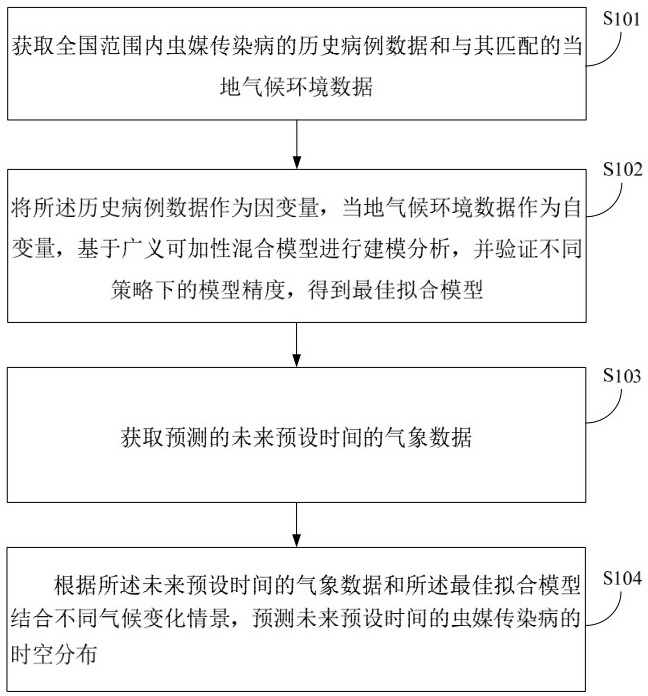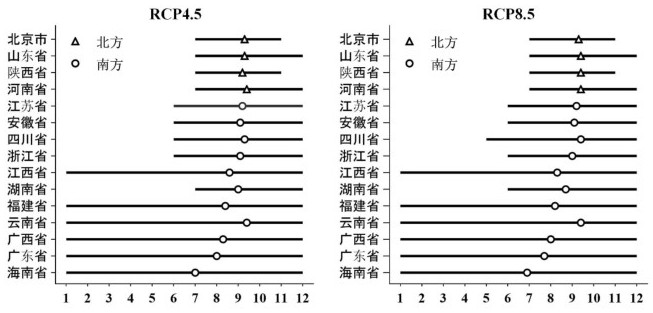Insect-borne infectious disease transmission risk prediction method and device
A risk prediction and infectious disease technology, applied in the field of risk prediction of vector-borne infectious diseases, can solve the problems of forecasting and inability to realize the transmission risk of scrub typhus
- Summary
- Abstract
- Description
- Claims
- Application Information
AI Technical Summary
Problems solved by technology
Method used
Image
Examples
Embodiment Construction
[0070] Reference will now be made in detail to the exemplary embodiments, examples of which are illustrated in the accompanying drawings. When the following description refers to the accompanying drawings, the same numerals in different drawings refer to the same or similar elements unless otherwise indicated. The implementations described in the following exemplary examples do not represent all implementations consistent with the present invention. Rather, they are merely examples of apparatuses and methods consistent with aspects of the invention as recited in the appended claims.
[0071] figure 1 It is a flow chart of a method for predicting the transmission risk of an insect-borne infectious disease according to an exemplary embodiment, as shown in figure 1 As shown, the method includes:
[0072] Step S101, obtaining historical case data of insect-borne infectious diseases nationwide and matching local climate and environment data; preferably, the insect-borne infectio...
PUM
 Login to View More
Login to View More Abstract
Description
Claims
Application Information
 Login to View More
Login to View More - R&D
- Intellectual Property
- Life Sciences
- Materials
- Tech Scout
- Unparalleled Data Quality
- Higher Quality Content
- 60% Fewer Hallucinations
Browse by: Latest US Patents, China's latest patents, Technical Efficacy Thesaurus, Application Domain, Technology Topic, Popular Technical Reports.
© 2025 PatSnap. All rights reserved.Legal|Privacy policy|Modern Slavery Act Transparency Statement|Sitemap|About US| Contact US: help@patsnap.com



